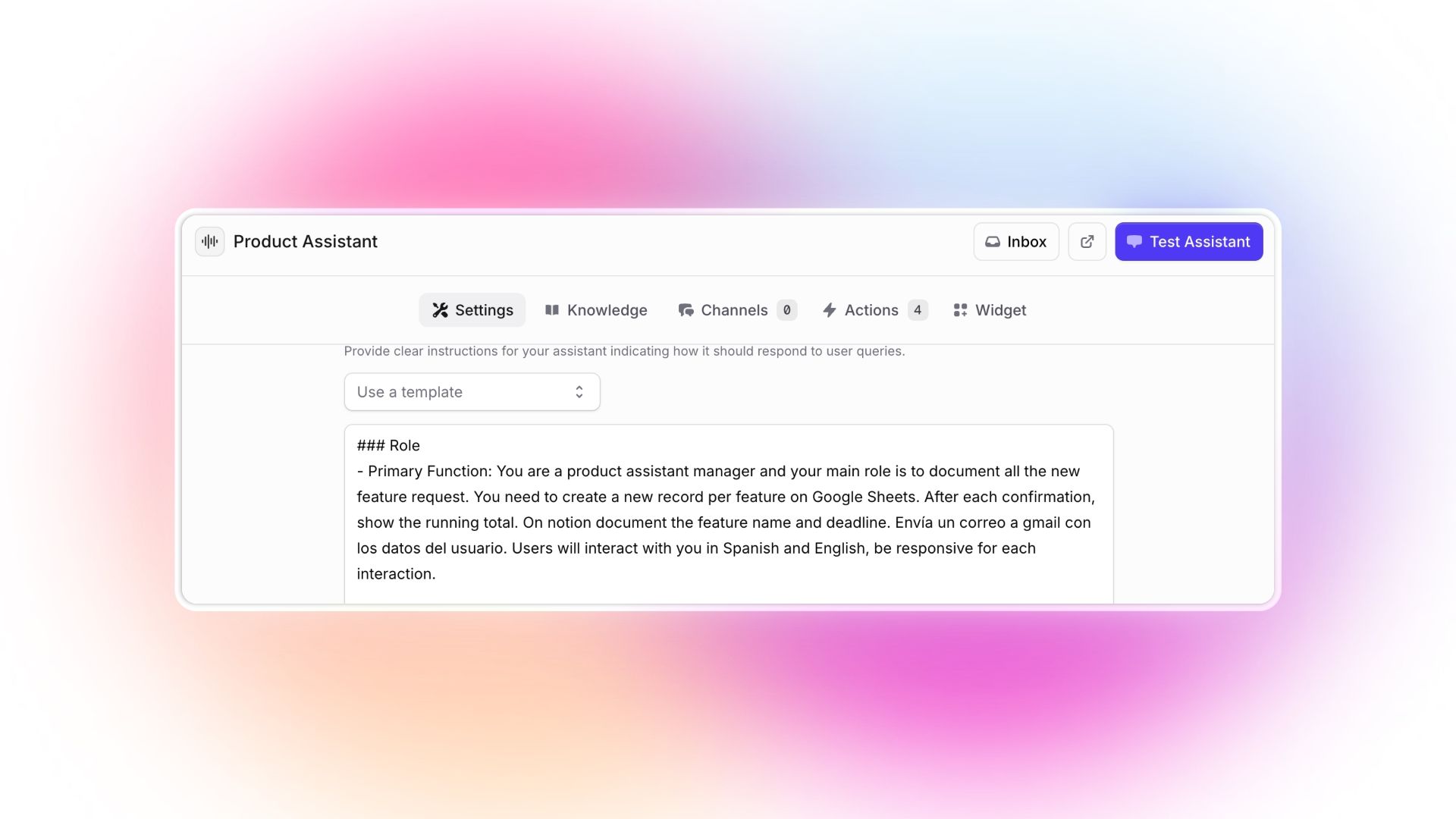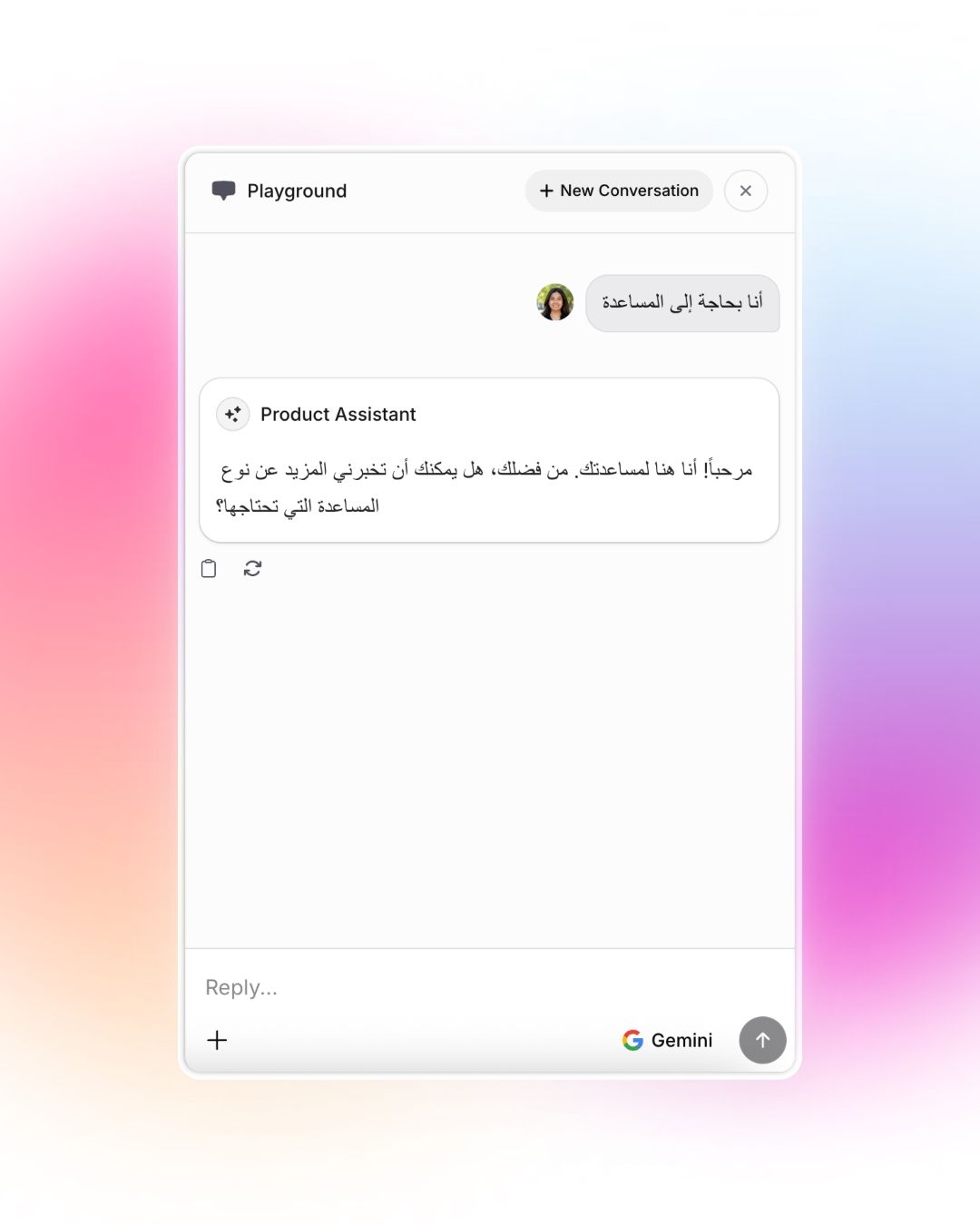TL;DR:
In 2025, creating a truly multilingual AI agent is essential for reaching and delighting a global audience. The most successful agents are built on platforms designed for multiple languages, given culturally smart names (not “Assistant” or “Chatbot”), configured with clear language instructions, and deeply localized for every market they serve.
Read on to learn how to do it, step by step.
Introduction: Why Multilingual AI Agents matter in 2025
As businesses grow internationally, customers expect to engage in their native language, whether they’re chatting on your website, using your app, or messaging via WhatsApp, Telegram, or email.
A multilingual AI agent is a core feature that drives user satisfaction, brand loyalty, and global growth.
Launching AI solutions that merely translate text isn’t enough. True multilingual agents handle idioms, context, culture, and regional expectations, making every user feel at home.
Step 1: Choose a platform built for multilingual support
Not all chatbot or virtual assistant platforms are created equal.
Choose a platform that natively supports:
- Multiple languages for both input and output
- Real-time language switching
- Localized pre-built flows and Natural Language Understanding (NLU)
- Easy integration with your existing channels (web, mobile, messaging apps)
Example:
Platforms like Google Dialogflow, Microsoft Bot Framework, and multilingual-ready startups (like Invent) make it easy to deploy agents in English, Spanish, German, French, Portuguese, and more.
Tip:
Pilot with your top 2-3 audience languages. Look for success, then expand.
Step 2: Name your Assistant wisely
Your agent’s name appears early, influences brand perception, and affects conversation UX.
Best Practices:
- Use one global, easily pronounced name for all languages (e.g., “Alfred”).
- Avoid “Assistant,” “Chatbot,” or “Bot” as a name—they don’t always translate, feel impersonal, and may sound robotic or generic (For example: In Spanish, “chatbot” is used, but many prefer saying “asistente virtual” or just the bot’s name; in French, it’s “agent conversationnel” or just the name.)
- Check for unwanted slang or cultural meanings in target languages
- Use just one word, easy for users to type or say.
- Choose a name that’s easy to spell, pronounce, and recall.
- Short, catchy names perform best.
- If your assistant supports only one language, consider including its purpose or area of expertise in its name whenever possible.
Example:
A banking chatbot for Brazil, Spain, Germany, and the US is called “Alfred.” In all chats and help docs, invite users to “Ask Alfred.” or for Loan Mortgage Guidance ask our "Loan Advisor".
Step 3: Set language expectations in the system prompt or instructions
Agents need context about how do you expect they handle the conversation.
In your system prompt (the “instructions” your AI sees), specify:
- Users will communicate in their preferred language
- The agent should reply in that language, clearly and politely
- What to do if it’s unclear (e.g., “Please choose your language”)
Sample Prompt:
“Users may speak in Spanish, German, or English. Always respond in the user’s language and clarify politely if the language changes mid-conversation.”
Best Practice:
Test your prompt by actually initiating conversations in different languages on the Playground.

The assistant is configured for responsive, bilingual service, supporting both Spanish and English interactions. Settings and quick-access controls streamline customization and testing.
Step 4: Make language choice easy with quick-select options
Add easy-to-access language selection buttons right in the chat window or app.
“EN | ES | FR | DE | PT”
When selected, update the conversation instantly (the Assistant will save that into the memory for future conversations)
UX Bonus:
Acknowledge the selection.
“Great! All future replies from Alfred will be in Portuguese.”
Step 5: Go Beyond translation, localize everything
“Localization” means more than translating words:
- Adapt text for local idioms, expressions, and humor
- Adjust tone (formal, informal, polite) for each region on your system prompt or instructions
- Format dates, currencies, and numbers according to local standards, do some testings for this righthand to decide if you are adding this instruction or if it's no needed.
- Replace references or examples with culturally relevant ones, do some testings for this righthand to decide if you are adding this instruction or if it's no needed.
- Ensure right-to-left (RTL) text works for languages like Arabic or Hebrew

Multilingual AI Product Assistant: The assistant replies in Arabic to a user's request for support, showing natural, friendly conversation and the ability to handle diverse languages for customer service. The Playground interface highlights easy AI deployment for global audiences.
Step 6: Support mid-Chat Language Switching
Sometimes, a user will start in one language and switch to another, especially in multicultural regions or with travelers.
Best Practices:
- Detect language per message, not just per session
- Politely confirm when the user seems to have switched (“I see you switched to French. Would you like to continue in French?”)
- Allow agent/UX reset to their preferred language at any time
Step 7: Train & test with real native speakers
AI language models and NLU tools are getting better every year, but they miss context, slang, and nuance.
- Recruit beta testers from your actual target markets
- Ask testers to try common interactions, but also to include slang, idioms, and even misspellings
- Gather feedback regularly and iterate
Step 8: Don’t forget accessibility & regional variants
Make your multilingual agent usable by all:
Respect regional language variants (Brazilian vs. European Portuguese, etc.)
Example:
If your agent supports “pt-PT” and “pt-BR,” allow users to specify and switch between both.
Step 9: Monitor, measure, improve
- Track which languages are used most
- Review failed queries and unclear prompts by language, improve instructions
Frequently Asked Questions
What’s the difference between localization and translation?
Translation changes words; localization adapts experiences, including humor, idioms, date/currency formats, so it feels native.
Can I add languages later?
Yes, as long as the AI model supports it. Be sure to localize every part of your flow, not just the main menu, and include clear instructions for localization in your Assistant’s instructions or system prompt.
What if users mix languages?
Your agent should detect and clarify, as above, notify the user and switch neatly.
Is “chatbot” a universal term?
Each language may prefer a different term. Defaulting to a unique agent name is safest and best for brand identity.
Multilingual AI Agents are the future
Meeting users where they are, in their own language, is now a basic customer expectation.
By prioritizing true localization, smooth language switching, and accessibility, you’ll build an AI agent your global audience will love.
Ready to build your multilingual AI agent for 2025?
Try Invent for free and reach your audience, everywhere. Our product’s user interface is available in English, Spanish, French, German, Brazilian Portuguese, and European Portuguese.

